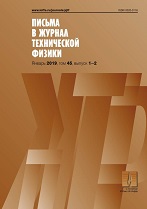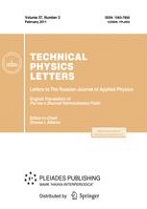|
This article is cited in 3 scientific papers (total in 3 papers)
Effective permittivity of an anisotropic composite of spheroidal particles in a dielectric matrix
B. A. Belyaevab, V. V. Tyurnevc, S. A. Khodenkova
a M. F. Reshetnev Siberian State Aerospace University
b Siberian Federal University, Krasnoyarsk
c L. V. Kirensky Institute of Physics, Siberian Branch of the Russian Academy of Sciences, Krasnoyarsk
Abstract:
The concentration dependences of the effective permittivity of an anisotropic composite containing co-directional particles in the form of oblate or elongated ellipsoids of rotation – spheroids – in the dielectric matrix are obtained. The calculation is made by the numerical solution of a system of coupled quadratic and integral equations obtained by a strict modification of the quasi-static Bruggeman theory. It is shown that the traditional (simplified) modification of the Bruggeman theory, widely used for calculating anisotropic composites, gives errors of different signs for the longitudinal and transverse polarization of electromagnetic waves relative to the axis of spheroids. In this case, the dependences of errors on the concentration of particles are non-monotonic, and the extremes observed on them can exceed 100%. Moreover, the position and magnitude of the extremes strongly depend on the ellipticity of the particles, as well as on the contrast of their permittivity with the matrix.
Keywords:
composite material, anisotropic permittivity, oblate and elongated particles, depolarization coefficients.
Received: 05.08.2021
Revised: 20.08.2021
Accepted: 20.08.2021
Citation:
B. A. Belyaev, V. V. Tyurnev, S. A. Khodenkov, “Effective permittivity of an anisotropic composite of spheroidal particles in a dielectric matrix”, Pisma v Zhurnal Tekhnicheskoi Fiziki, 47:23 (2021), 22–26
Linking options:
https://www.mathnet.ru/eng/pjtf4610 https://www.mathnet.ru/eng/pjtf/v47/i23/p22
|


| Statistics & downloads: |
| Abstract page: | 73 | | Full-text PDF : | 78 |
|





 Contact us:
Contact us: Terms of Use
Terms of Use
 Registration to the website
Registration to the website Logotypes
Logotypes








 Citation in format
Citation in format 
